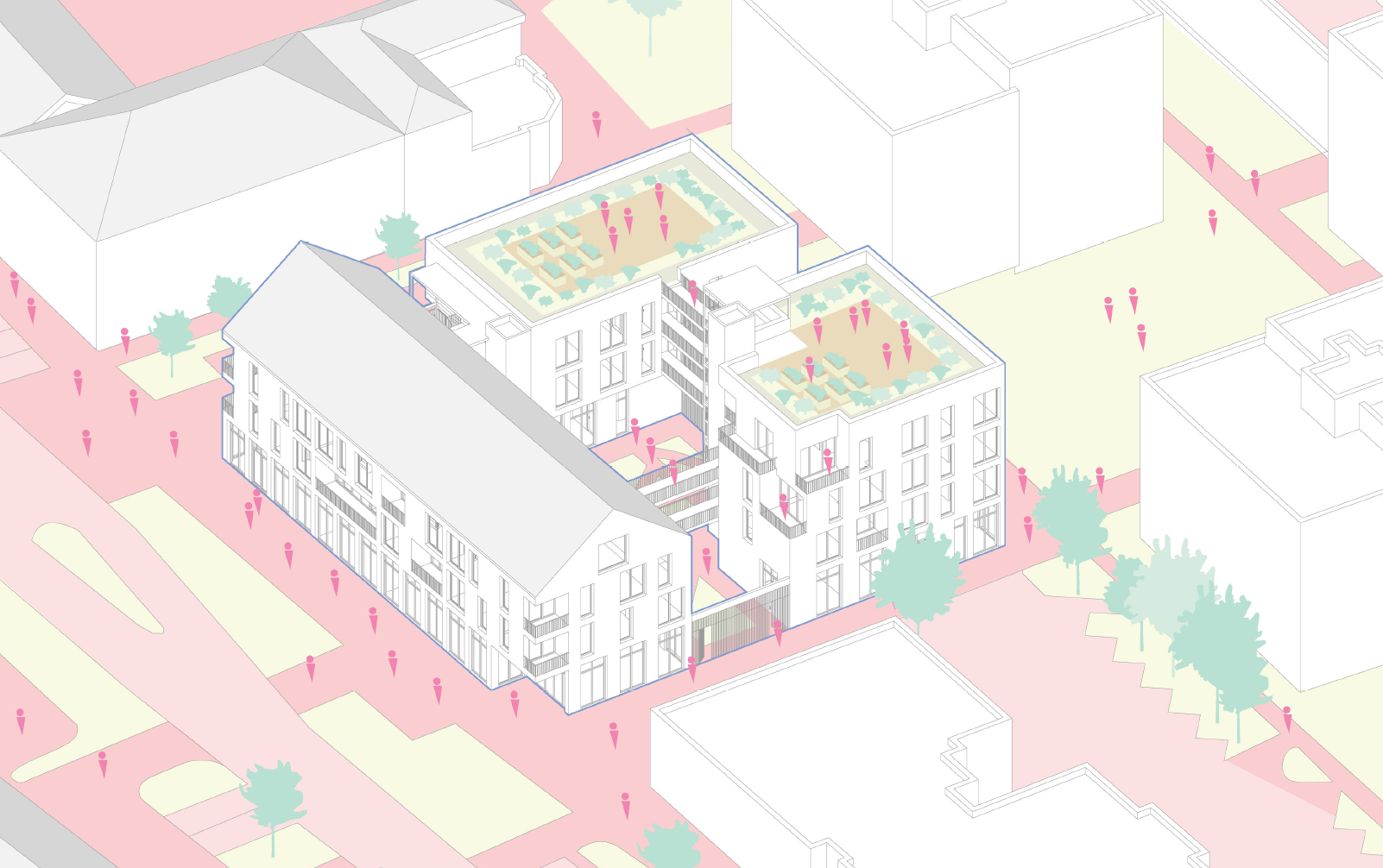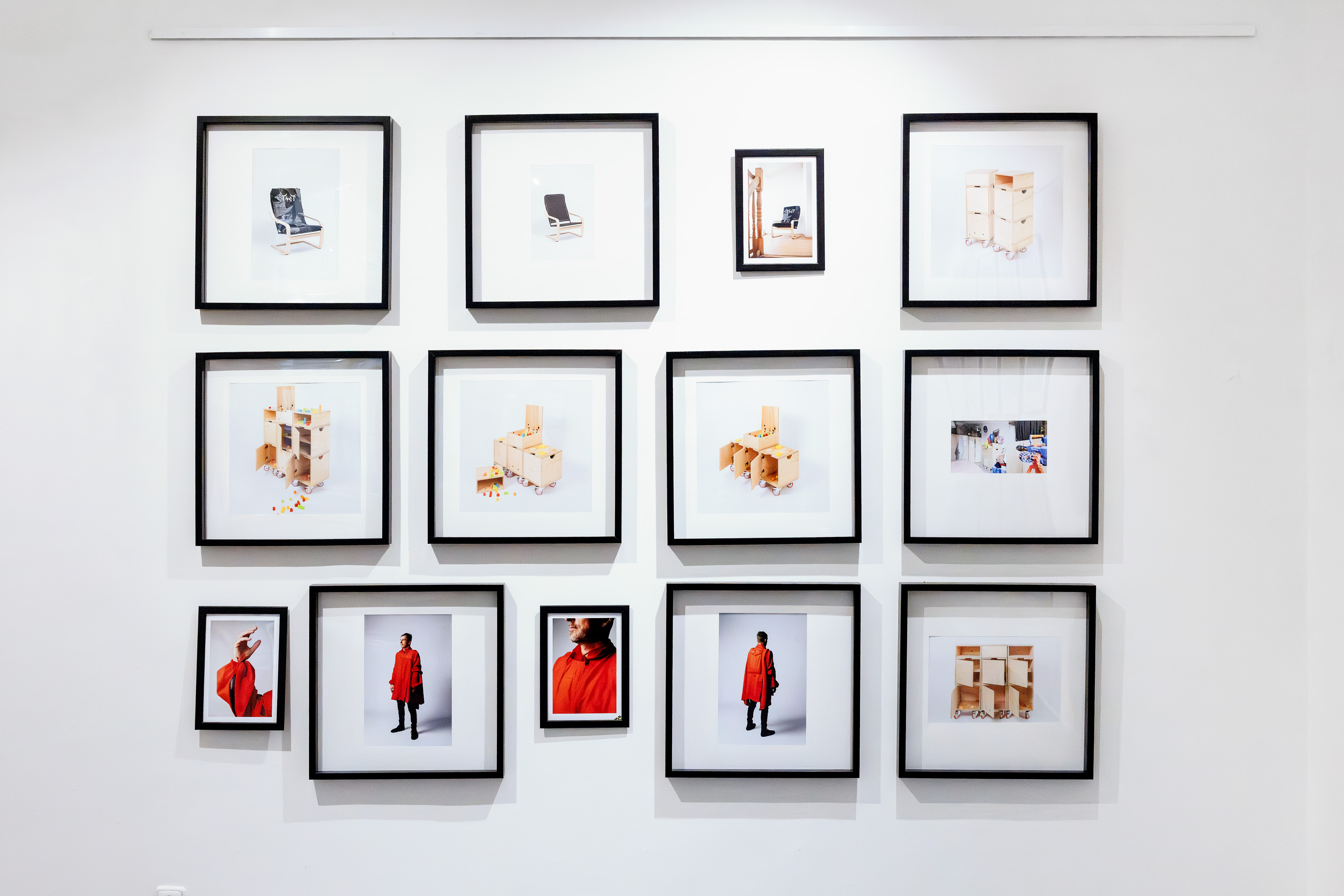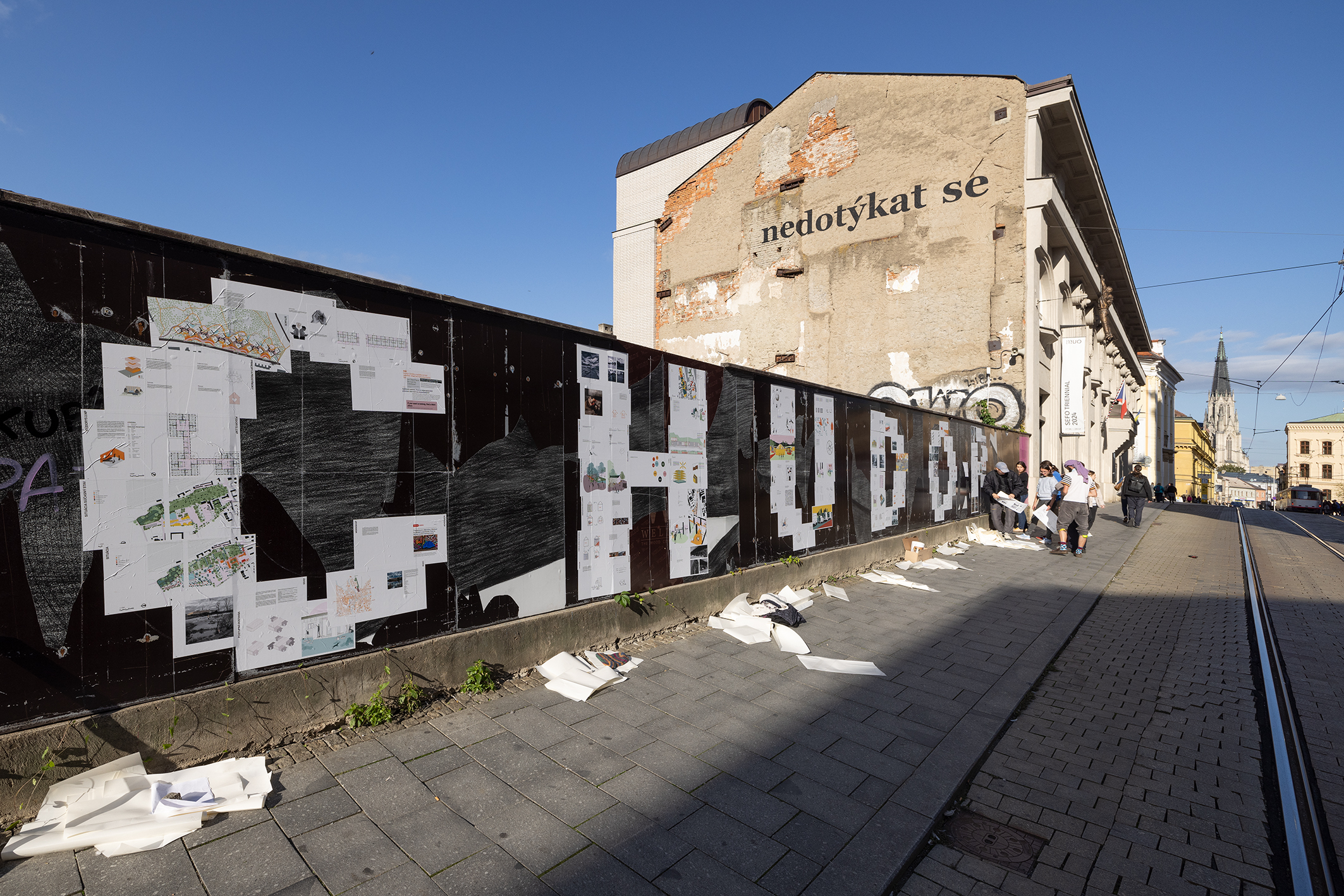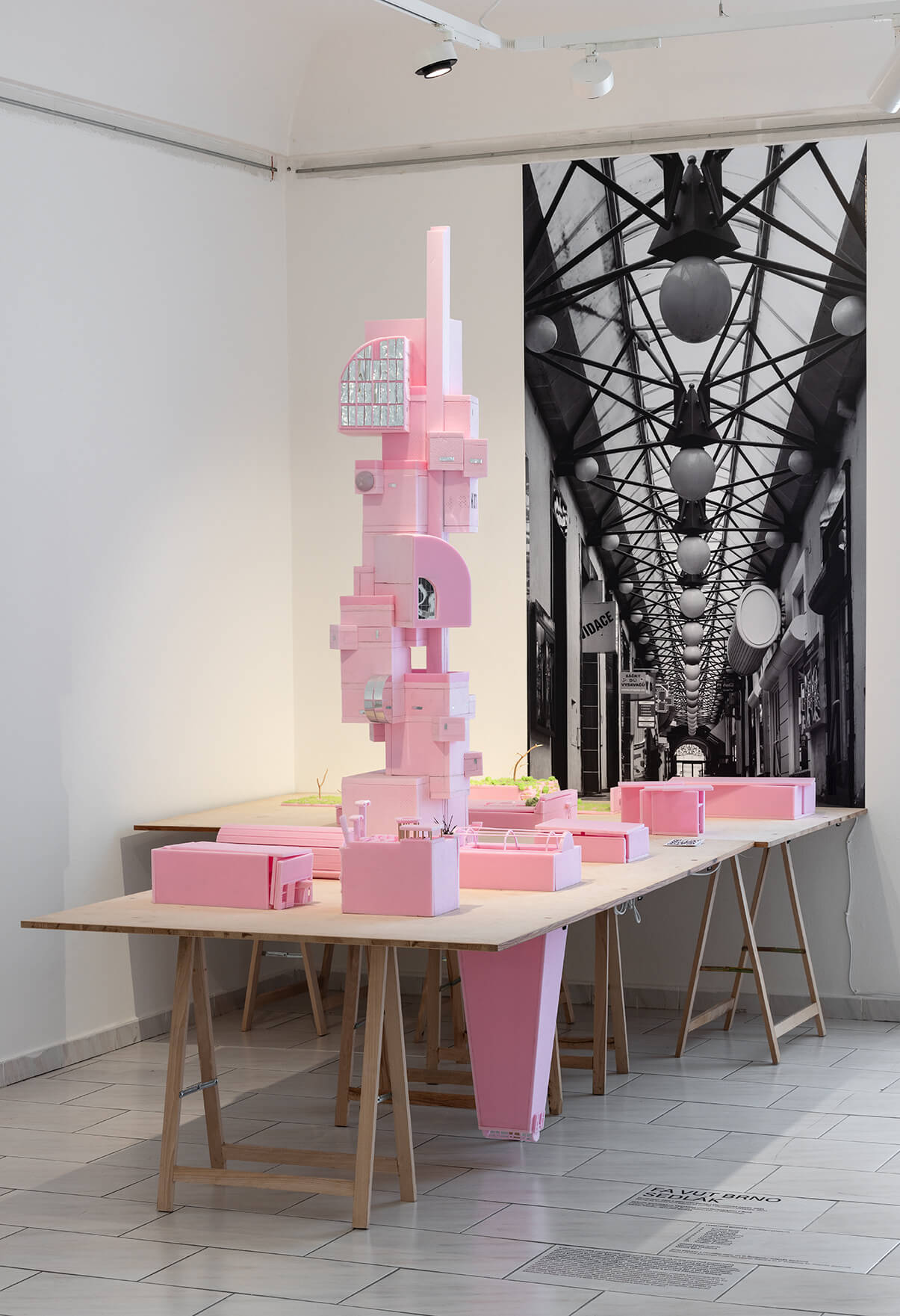
Studio Kristína Richter Adamson a Radek Suchánek.

Vesna Lab project by Marie Joja and Barbora Ponešová studio. | Photo: Karel Poneš

Project "Dreams about Poverty" by Vojtěch Jemelka studio.
.jpg)
Studio Oleksii Bykov

Jaroslav Sedláka studio work. | Photo: Karel Poneš
Accompanying programme and exhibition opening | Information from House of Arts
Exhibition Vector of Poverty
For three semesters, students from several studios at the Faculty of Architecture, BUT, have been exploring various aspects of poverty, inclusion, and ways in which this highly topical social issue could be articulated in architecture. Is it even permissible for architects to view the very complex topic of poverty through their profession?The exhibition “Vector of Poverty” aims to highlight the social dimension of architecture, its connection with economic and political factors that influence the relationship to architecture, as well as the relationship of architecture to the problems it is supposed to help solve.
The exhibition touches on the relationship between architecture and poverty, a topic that touches not only physical space, but also social, economic and political aspects of society.
Poverty manifests itself in architecture in various ways. It can be a lack of quality housing, limited access to public spaces and services, segregation and social exclusion. Architecture can reinforce poverty, but also alleviate it. It can be an instrument of social control and segregation, but also a means of creating an inclusive and just environment.
The exhibition “Vector of Poverty” explores how architecture affects the lives of people living in poverty and how it can contribute to solving social problems. It presents projects and concepts that seek to create affordable and dignified housing, revitalize neglected areas, and support social inclusion.
It also includes an artistic contribution by Karin Písaříková, which touches on our everyday life and the constantly recurring activities associated with hygiene and food. The first artistic object is an interactive portal with cleaning brushes, the activation of which refers to the physical act of cleansing. At the same time, it symbolizes cleansing from prejudices, stereotypes and social barriers. On the second object, called The Table of Plenty, mechanically driven plates illustrate the constant cycle of human life and its needs, from which we cannot escape. It also points to the economic uncertainty that accompanies our actions.
One example is the intention of Michal Palaščák’s studio to create urban housing on the site of a former industrial area that would provide for the needs of different types of households. The main task is not primarily architecture, but the creation of a space that could be inhabited together by people with different needs, different incomes, and different interests.
Affordable and high-quality housing is the basis for healthy development of society. Rising real estate prices and a lack of social housing make access to housing more difficult for low-income groups. Architecture can respond to this crisis and offer innovative approaches to solving this problem. The studio of Marek Štěpán and Jiří Tauber decided to find a model of affordable housing by radically reducing its weight. A "lightweight" house should reduce shipping weight and use as little material as possible, thereby increasing its affordability.
Shared forms of housing or community construction can also help to increase the availability of housing. The design of such a model of house construction, in which its future residents jointly participate in the planning, financing and construction, was tested by the studio of Kristína Richter Adamson and Radek Suchánek against the backdrop of a small town. In addition to reducing the cost of purchasing an apartment, one of the main motives of such an association is the effort to create an environment for community housing and social proximity.

Studio Kristína Richter Adamson a Radek Suchánek.
How to revitalize neglected and segregated areas while preserving their identity and social structure was the task of the studio of Gabriel Peni, Servie Boetzkes and Radek Brunecký. Their intention was based on the idea that supporting the diversity of ownership relations will contribute to ensuring housing for various social groups in a given location, including the most vulnerable ones.
Another aspect that the exhibition focuses on is segregation and social exclusion. Poverty is often concentrated in certain areas and neighborhoods, leading to the isolation and marginalization of their inhabitants. The exhibition asks how architecture can contribute to the revitalization of these areas and their reintegration into the urban organism. An important factor here is the support of community life and social inclusion. Architecture can create an environment that connects people from different social classes and promotes mutual respect and solidarity.
With this setting, the studio of Barbora Ponešová and Maria Joja began cooperation with the Vesna association, which focuses on socially disadvantaged groups, especially single mothers and Ukrainian families. Their Vesna lab examined the Brno infrastructure of available social and health care to open a debate on the current form of poverty, places of help and the role of design in alleviating these problems. Part of the tasks was to design minimal forms of housing suitable for people in need or for those who find themselves on the verge of so-called invisible poverty.

Vesna Lab project by Marie Joja and Barbora Ponešová studio. | Photo: Karel Poneš
The most visible form of poverty is, on the other hand, homelessness, which represents a complex social problem with devastating impacts on individuals and society. People find themselves homeless as a result of a combination of many factors, such as unemployment, addiction, lack of housing or weak social ties. Solving this problem requires a very comprehensive approach and architecture is not the primary tool. Nevertheless, Vojtěch Jemelka's studio decided to deal with homelessness, in confrontation with the image of the city of Olomouc, which is portrayed as a historical architectural gem. In its project Poor Olomouc, however, it rather speaks of lifeless kitsch, the backdrop of which overlaps the everyday reality of many people who find themselves in a state of material, relational and psychological need. Students experienced firsthand how shameful begging is, mapped out places where homeless people are concentrated, and captured collages of their dwellings.

Project "Dreams about Poverty" by Vojtěch Jemelka studio.
Poverty is no longer primarily a problem of the so-called global South, but with increasing intensity, this topic is also being discussed in debates concerning the global North. One of the causes is climate change, which brings unexpected threats. Drought, floods, pollution, and land degradation hurt people's health, productivity, and living conditions, which can lead to a deepening of poverty. Poor people also have limited resources and options for coping with these problems. Jan Mléčka's studio asked itself the same question as the German economist Siegen Helge Peukert: how radical do we have to be in order for us as humanity to continue living on Earth? Peukert compiled several radical theses, the fulfillment of which should avert the thermophysical threat to humanity. Jan Mléčka's students sought an answer to what their application means for architecture.
Global conflicts, such as the civil war in Syria and Russia’s brutal invasion of Ukraine, have triggered a huge humanitarian crisis, the consequences of which have also been felt in Europe to an unprecedented extent. However, Oleksiy Bykov’s studio focused on the situation in devastated Ukraine after the fighting ended and sought strategies that should help restore the country – cities, infrastructure, but also the architectural heritage, which is the physical source of the nation’s cultural identity.
.jpg)
Studio Oleksii Bykov
The expansion of the spectrum of threats and the resulting uncertainty entails the radicalization of political positions and plays into the hands of populist leaders. Part of the weakening of the democratic system may also be the strengthening of the influence of corporate companies, which may seek to increase their power at the expense of the state and its institutions. What such a loss of the opportunity to promote the public interest through a functioning state and its replacement in the form of a corporate utopia could cause, is depicted by Jaroslav Sedlák’s studio.

Jaroslav Sedláka studio work. | Photo: Karel Poneš
The basic idea of Szymon Rozwalka's studio is that we can hardly aspire to eradicate poverty. Rather than a mistake or a temporary abnormality, we should consider poverty as an integral part of our world. Poverty has many faces and our duty, as well as that of architecture, is not to lose sensitivity to it.
Reflecting on the role of architecture in solving complex social problems is an integral part of this process, and the exhibition "Vector of Poverty" wants to be a part of it.
The exhibition "Vector of Poverty" shares a common theme with the exhibition "Poverty", which takes place at the Gallery of Fine Arts in Havlíčkův Brod and the Horácká Gallery in Nové Město na Moravě and was created under the curatorial supervision of Barbora Ilič, Michal Konečný and Stanislav Biler. Both exhibitions share a common theme, which is poverty, but they examine it from different angles and in different contexts. “Vector of Poverty” focuses on the relationship between architecture and poverty, with an emphasis on how architecture influences the lives of people living in poverty and how it can contribute to solving this issue. The exhibition “Poverty”, on the other hand, deals with poverty in a broader social and historical context, with an emphasis on the reflection of this topic in art from the Baroque to the present. Both exhibitions refer to each other, because together they create a comprehensive picture of the issue of poverty, which includes both its physical manifestations in architecture and urban planning, as well as its cultural and social aspects.
Organisers: Faculty of Architecture, Brno University of Technology, in cooperation with the Brno City House of Arts
Location: House of the Lords of Kunštát, Dominikánská 348, Brno
Date: 19. 3. – 25. 5. 2025
Opening: 18. 3. 2025
Curator: Rostislav Koryčánek
Architectural framework of the exhibition: Eva Truncová
Graphic design: Alina Matějová
Participating studio leaders: Servie Boetzkes and Gabriel Pena, Oleksii Bykov, Marie Joja and Barbora Ponešová, Vojtěch Jemelka, Jan Mléčka, Michal Palaščak, Karin Písaříková, Szymon Rozwalka, Jaroslav Sedlák, Kristina Richter Adamson and Radek Suchánek, Marek Štěpán
Accompanying programme and exhibition opening | Information from House of Arts
| Inserted by: | Tran Lucie |
|---|---|
| Inserted | |
| Last updated |